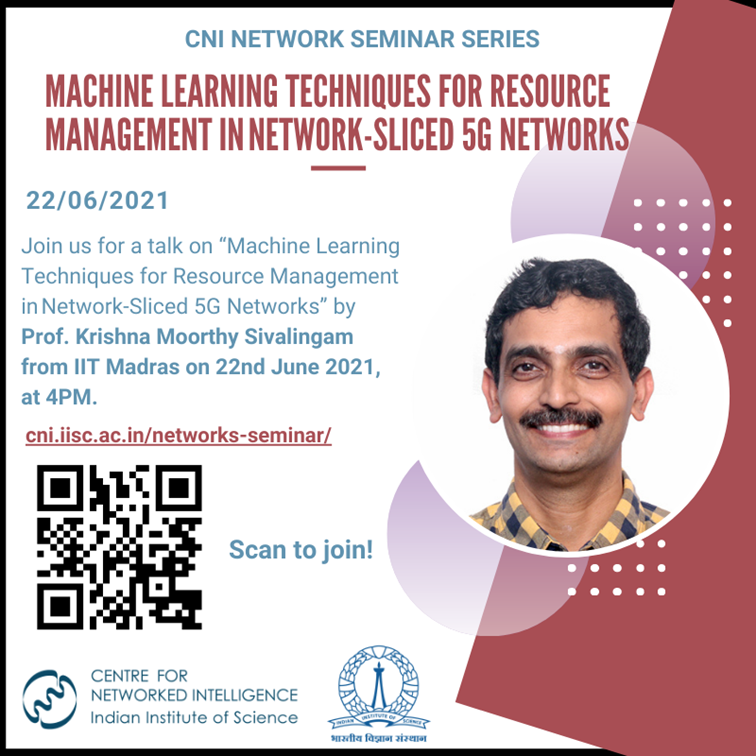
Abstract
In 5Gnetworks, the concept of network slicing has been defined to share the underlying network resourcesamong different slices. Here, slices can be different tenants (as invirtual mobile network providers), different traffic types (asin Internet of Things, enhanced Mobile Broadband) and so on.This has been defined for efficient resource utilization as wellas providing the ability to handle diverse traffic types withdifferent service requirements. Network slicing can be realized in theradio access network (RAN), the optical transport network and the 5GCore. Efficient allocation of different typesof limited system resources, such as cloud/data center computing forrealizing virtualized network functions in the RAN and Core, radiospectrum, and optical network bandwidth is an important problem to beaddressed by network operators. Traditionally, this has beenhandled using heuristics, complex resource optimizationformulations, etc. Recently, machine learning techniques have been developedfor providing solutions to some of these resource managementproblems. In particular, there has been interest in suitably utilizingreinforcement learning (RL), deep reinforcement learning (DRL) andfederated learning (FL) techniques. Several standards activities are underway to define the framework for applying ML to Networks in general, andspecifically for 5G Networks. This talk will present anoverview of the concepts of 5G networks, Network Slicing, standardsframeworks, and some representative state-of-the-artdevelopments in this field, with specific focus on the use of DRLtechniques for resource Management in Network Sliced 5G networks. Krishna Moorthy Sivalingam (S. Krishnamoorthy), IIT Madras
Krishna Sivalingam is anInstitute Chair Professor in CSE Department, IIT Madras, Chennai, INDIA. He receivedhis Ph.D. (1994) and M.S. (1990) degrees in Computer Sciencefrom SUNY Buffalo; and his B.E. (1988) degree from AnnaUniversity's College of Engineering Guindy, India. From 1994-2007, hewas a faculty member in University of Maryland, Baltimore County;Washington State University, Pullman and University of North CarolinaGreensboro, all in the USA. His research interests include computernetworks and wireless networks. He is an IEEE Fellow, INAEFellow and ACM Distinguished Scientist. He has served asEditor-in-Chief of Springer Photonic Network Communications Journal and EAITransactions on Future Internet, and is presently an EditorialBoard member of IEEE Networking Letters. 
